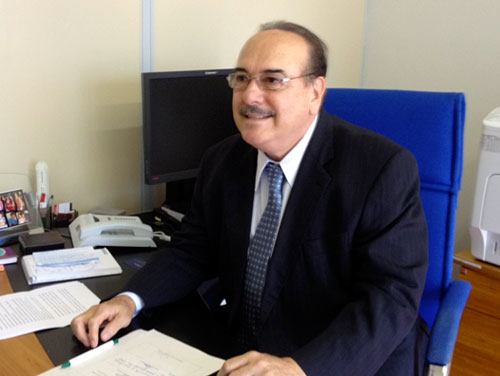
FAPEMIG boss Evaldo Ferreira Vilela.
By Michael Banks in Belo Horizonte, Brazil
I’m writing this while on a week-long road trip across Brazil to gather information for a new report that IOP Publishing, which publishes Physics World, is producing for the Brazilian Materials Research Society.
While on my trip, I have visited a number of institutes that focus on materials research. But I also had the chance to talk a bit of policy when visiting FAPEMIG – the main state funder for research in Minas Gerais, which is the second most populous state in Brazil.
In Belo Horizonte, which is the capital of Minas Gerais, I met Evaldo Ferreira Vilela, who is director of science, technology and innovation at FAPEMIG.
FAPEMIG is about 30 years old and it mainly awards grants to researchers plus scholarships for students. Some of these grants are funded 50/50 together with the federal government.
Research for the region was boosted in 2007 when the state government of Minas Gerais began to pay 1% of its state income to FAPEMIG. “The state realized that it had to put money into research and to acknowledge the benefits that science brings,” says Vilela. “But we now have to deliver the results of this investment.”
Vilela has only been director of science at FAPEMIG for three months, but he is already preparing the agency for the next 10 years. “We have to do more than just publish papers,” he adds, “We have to go further.”
Indeed, part of that new focus is a programme FAPEMIG began last year looking to boost innovation in the region. The initiative aims to foster start-up companies at universities by providing them with facilities as well as a funding of $25,000 to help get them started.
In the programme’s first call it received 1500 proposals from all areas of science. Indeed, you don’t even have to be based in Minas Gerais to apply, but if you win a grant, then you will have to develop some link with the state. In June, 40 of these proposals were selected, including eight from abroad.
The programme will also have a second round when the 10 most successful projects receive another $25,000 as well as a mentor who could also provide more cash. The other 30 will not receive any more support from FAPEMIG but they can get it from elsewhere if they need it. “This programme is to renew the economy and also to produce entrepreneurs,” says Vilela.
It is not the only FAPEMIG programme helping to nurture future entrepreneurs. The agency also runs the Programme of Incentives, Innovation (Pii). This involves people applying to FAPEMIG outlining how their research could have practical applications. FAPEMIG then analyses the proposals and talks to companies about them. If a firm feel that a proposal is interesting, then the agency helps the researchers put together a business plan, which could then secure investment from the company. In addition, successful applicants also get an all-expenses-paid trip to MIT or Oxford University.
You can read more about research in the country in Physics World Special Report: Brazil, which is now out.
Trackback: Blog - physicsworld.com